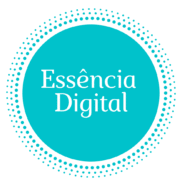You’ve seen the success stories: the six-figure course launches, the best-selling ebooks, the simple templates that generate passive income month after month. The potential of creating and selling a digital product is clear, but a single, paralyzing question often stands in the way: “What on earth should I create?”
This uncertainty can keep aspiring creators stuck in a loop of brainstorming and inaction for months, or even years. The fear of investing time and effort into building something that no one buys is real.
But finding a profitable idea isn’t a moment of sudden, divine inspiration. It is a systematic process of empathetic investigation, rigorous validation, and strategic scoping. This guide will walk you through a proven framework for moving from a blank page to a validated, high-potential idea for your first digital product.
The “Problem-First” Principle: Your Starting Point
The most common mistake new creators make is starting with a product format. They think, “I want to sell a course” or “I should create an ebook.” This is backward.
Successful digital products are not born from a creator’s desire to sell something; they are born from an audience’s desperate need for a solution. You must adopt the “Problem-First” Principle. Fall in love with solving a specific, painful problem for a specific group of people.
How to Mine for High-Value Problems:
- The “Digital Eavesdropping” Method: Go to the online places where your target audience congregates and listen to their frustrations.
- Reddit & Niche Forums: Look for subreddits or forums related to your area of expertise. Pay close attention to posts that start with “How do I…?” “I’m struggling with…” or “Does anyone know a tool for…?”
- Amazon Book Reviews: Find the top-rated books in your niche and read the 3-star reviews. These reviews often reveal what the book was missing—that gap is your opportunity.
- YouTube & Blog Comments: Look for the questions that people are repeatedly asking in the comment sections of popular creators in your field.
- The “Scratch Your Own Itch” Method: What problem have you personally solved? What skill did you have to learn the hard way that you could teach others to learn the easy way? Your own journey is often your most authentic source of ideas.
The “Minimum Viable Offer”: Validate Before You Build
Once you have a promising idea, your next step is to validate it. Do not spend the next six months building a 20-hour video course in isolation. You must first prove that people are willing to pay for your solution. This is done by creating a “Minimum Viable Offer” (MVO)—a low-effort way to test the market’s appetite.
Powerful Validation Techniques:
- The Pre-Sale Landing Page: This is the classic “smoke test.” Create a simple one-page website that clearly describes the promise and transformation of your future product. Include a detailed outline of what will be included. Then, add a call to action to “Pre-Order Now for a 50% Discount” or “Join the Founders’ Circle.” If you can get people to pay for the promise alone, you have a validated winner.
- The Paid Live Workshop: Instead of building a massive course, test the core content with a 90-minute paid live workshop. It’s much less work to create a slide deck and host a live session than it is to produce a full course. If you can sell 20 spots for your workshop, you’ve proven the topic has commercial value.
- The Beta Group Test: Create a rough “beta” version of your product—it could be a simple series of Google Docs or unedited videos. Offer it to a small, select group of people at a steep discount (or for free) in exchange for detailed feedback and a testimonial. This not only validates the idea but also helps you co-create the final product with your ideal customers.
Product Architecture: Match the Format to the Problem
Once your idea is validated, you can decide on the best format to deliver your solution. The format should be dictated by the nature of the problem you are solving.
- If the problem is a lack of KNOWLEDGE…
The solution is informational. This is perfect for an ebook, a pre-recorded video course, or a resource library. - If the problem is a lack of TIME or SKILL…
The solution is a shortcut. This is perfect for templates (Notion, Canva, Webflow), toolkits, presets, or code snippets. - If the problem is a lack of ACCOUNTABILITY or COMMUNITY…
The solution is interactive. This is perfect for a paid membership community, a cohort-based course, or a high-touch coaching program.
The Power of “Small and Specific”: Scope Your First Product
Your first digital product should not be your massive, all-encompassing magnum opus. The goal of your first product is to get a quick win. You want to deliver a specific transformation for a specific person, build your confidence, and generate revenue and testimonials that you can leverage for future, bigger products.
A small, specific promise is easier to market, easier to sell, and easier to deliver.
Compare these ideas:
- Too Broad: “A course on social media marketing.”
- Small & Specific: “A 60-Minute Workshop: How to Write 30 Days of Instagram Captions in One Afternoon.”
- Too Broad: “A template for business owners.”
- Small & Specific: “The Ultimate Notion Template for Freelance Web Designers to Manage Their Entire Client Workflow.”
Conclusion: Stop Searching for an Idea, Start Searching for a Problem
The perfect idea for your first digital product is not going to strike you like a bolt of lightning. It is waiting to be uncovered through an intentional process of listening, testing, and strategic thinking.
Shift your focus. Stop looking for a product you can sell, and start looking for a problem you can solve. Your most profitable and fulfilling digital product idea is not hiding in your head; it’s hiding in the frustrations and desires of the audience you are meant to serve.

